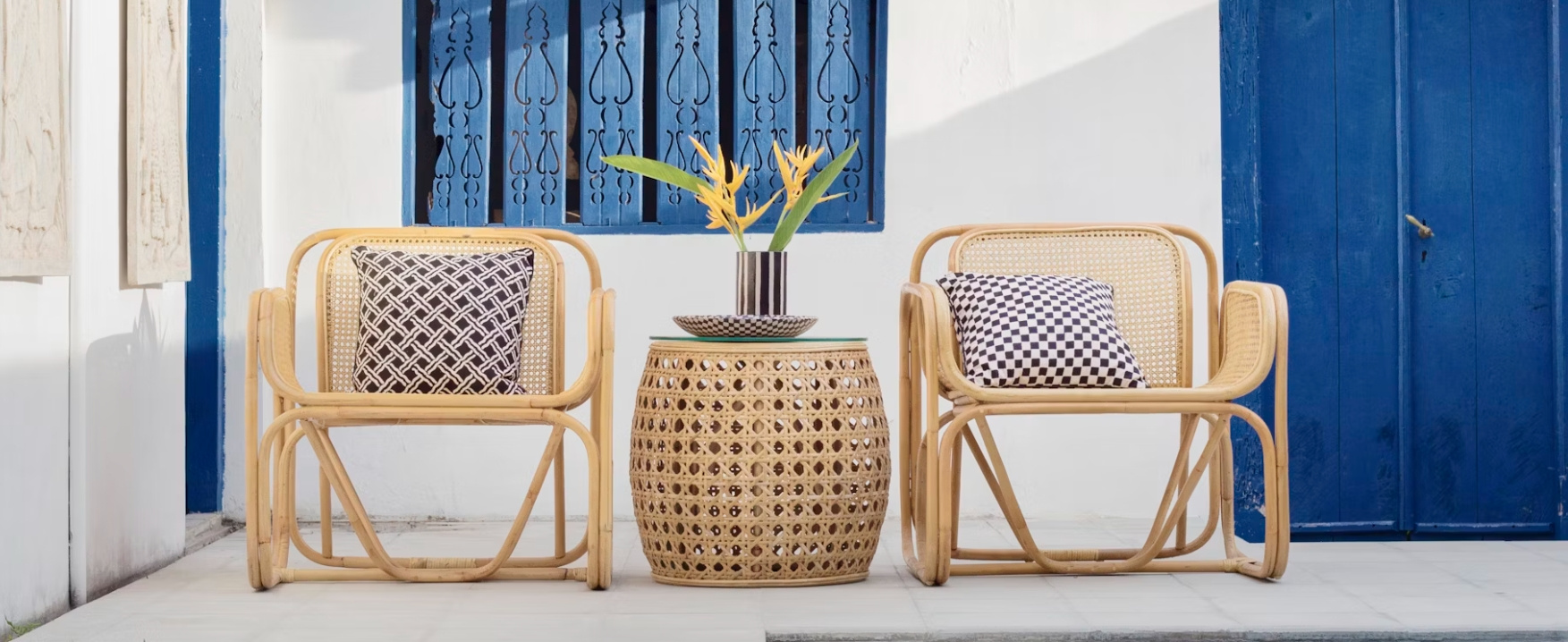The Benefits of Bamboo in Furniture Design

Bamboo has become an increasingly popular material in furniture design due to its numerous benefits that align with modern demands for sustainability, style, and functionality. Here are some of the key advantages of using bamboo in furniture design:
Sustainability and Environmental Benefits
Rapid Growth and Renewability: Bamboo is one of the fastest-growing plants in the world, capable of reaching maturity in just 3-5 years. This rapid growth rate makes it a highly renewable resource, unlike traditional hardwoods which can take decades to mature. By choosing bamboo furniture, consumers support sustainable practices and help reduce deforestation.
Carbon Sequestration: Bamboo absorbs more carbon dioxide and releases more oxygen than many other plants, making it an effective tool in combating climate change.
Minimal Pesticide Use: Bamboo is naturally resistant to pests, reducing the need for harmful pesticides and contributing to healthier ecosystems.
Durability and Strength
Robustness: Despite its lightweight nature, bamboo is incredibly strong and durable. It is often compared to hardwoods in terms of strength and is even used in construction for scaffolding and structural elements.
Resistance to Moisture and Pests: Bamboo furniture is resistant to moisture, pests, and rotting, making it suitable for both indoor and outdoor use.
Aesthetic and Design Versatility
Natural Beauty: Bamboo furniture offers a unique aesthetic appeal with its natural, warm, and earthy tones. It can enhance the elegance of any space, whether modern or traditional.
Design Flexibility: Bamboo's flexibility allows it to be crafted into a wide variety of furniture styles, from minimalist and contemporary to rustic and traditional. This versatility ensures that there is a bamboo furniture piece to suit every taste and decor style.
Customizable Aesthetics: Its natural grain and light color provide a neutral palette that can be stained or finished to match diverse interior themes, enhancing its versatility in design.
Practical Benefits
Lightweight and Easy to Move: Bamboo furniture is generally lightweight, making it easy to rearrange and move, which is particularly beneficial for those who frequently change their living space layouts.
Easy Maintenance: Bamboo furniture requires minimal maintenance. It can be easily cleaned with mild soap and water, making it a practical choice for busy households.
Economic and Health Advantages
Cost-Effective: Often more affordable than traditional hardwood furniture, bamboo offers a budget-friendly option without compromising on style or durability.
Hypoallergenic Properties: Bamboo is naturally hypoallergenic and resistant to dust mites, making it an excellent choice for individuals with allergies or respiratory issues.
Practical Advantages
Resistance to Environmental Changes: Unlike many kinds of wood, bamboo does not swell or shrink with changes in temperature and humidity. This stability ensures that bamboo furniture maintains its integrity and appearance over time, making it ideal for both indoor and outdoor use.
Lightweight and Easy to Handle: Bamboo's lightweight nature makes it easy to move and rearrange, offering flexibility for homeowners who frequently update their living spaces.
Broader Applications and Future Prospects
Wide Range of Applications: Beyond furniture, bamboo is used in flooring, construction, and even textiles, showcasing its versatility as a material. Its rapid growth and renewability make it a promising alternative in various industries seeking sustainable solutions.
Growing Popularity: As awareness of environmental issues increases, bamboo furniture is gaining popularity among consumers and designers. Its combination of sustainability, durability, and aesthetic appeal positions bamboo as a leading material in the future of eco-friendly design.
In conclusion, bamboo furniture is not only an eco-friendly and sustainable choice but also offers a range of practical, aesthetic, and economic benefits. Its combination of strength, beauty, and environmental advantages makes it an ideal material for modern furniture design, appealing to both environmentally-conscious consumers and style enthusiasts alike. If necessary, try investing in bamboo furniture and do your part for the environment.
